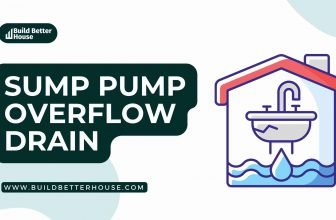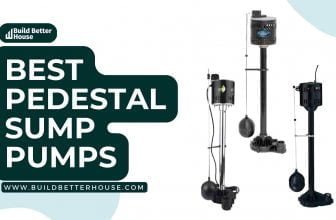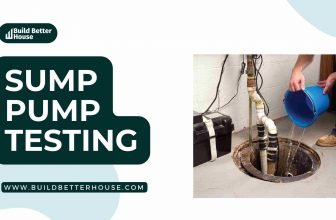Sump Pump Vents: Why You Need One and How to Install It?

Sump pump vents are an essential component of a sump pump system, providing a way for air to escape when the pump is activated. Without a vent, the pump can become clogged or damaged, leading to costly repairs.
Installing sump pump vents is a relatively simple job that can be done by most homeowners with basic DIY skills. In this article, we’ll explain why sump pump vents are important, and how to install one in your home.
So if you’re looking to make sure your sump pump system is functioning properly, read on to learn more about sump pump vents!
Why a Cover?
Depending on the situation, a sump pump cover could be necessary for your system. If your basement contains radon gas, you need a cover to keep the gas from accumulating within your house.
Although radon is a radioactive gas, it is essential to safeguard your health by avoiding it, as it may cause lung cancer, coughing, chest pains, and bronchitis, among other health problems. The installation of sump pump vents and cover is, therefore, advisable to prevent things from falling apart
Likewise, covering your sump pump vents is a wise choice if there is a mold infestation. Water will frequently stay in an open sump pit and will only drain when the water level reaches a specified point.
If the water in the pit evaporates before that, your home will be more humid, which can increase the likelihood of mold problems.
Sump Pump Vents: What Do They Do?
Your sump pump vents serve two essential purposes: it lets air in and out.
Gasses from the sump pit can escape into the atmosphere as it is exposed outdoors, preventing radon and other gasses from gathering inside your home.
The vent draws air in when your sump pump operates and removes the water it holds. Your pump will only be able to pump the water if there is airflow to replace the water that has been displaced.
Sump Pump Vents: Where To Install?
The pipe for the sump pump vents can be set directly on top of the sump cover or into a small hole in the floor.
Making a hole over the drain will make it easier to access the sump whenever it needs maintenance. If the exit point of your vent pipe from the basement is not close to the sump, it would be better to keep it in the base instead.
We recommend drilling through the lid to install sump pump vents, as this technique gives your pump improved ventilation, airflow and also keeps pests and insects out.
Sump Pump Vents: Installation
Sump pump vents are easy to install. It takes only a few tools and about an hour of free time. Follow these 4 easy steps, and your pump will begin venting radon right away!
Tools Required
For the installation of standard sump pump vents, you will need the following:
- A measuring tape
- A saw
- PVC pipe – to use as the vent pipe
- PVC joints/coupling
- Drilling machine
Step 1: Measure and Cut
Take your vent pipe and mark a 4″ length with the tape to install sump pump vents.
Using a saw, cut the pipe precisely as measured. Consider every angle to ensure the piping fits perfectly in your wall, ceiling, or floor.
Step 2: Drill a Hole
The following step is to use a drilling machine and make a hole in the lid or side of the basin.
The hole must be the same size as the pipe and closed with epoxy or cement to prevent radon from seeping into your basement.
Step 3: Lay the Vent Pipes
Next, connect your basin to the outdoor vents with a PVC pipe. The pipes should easily fit into the curves and joints, and the fasteners can be nailed or screwed into the wall. To create airtight bonding at the joints, use epoxy or quick-dry putty.
Or use a coupling so the pipe can move across to maintain the sump pump.
Step 4: Test
Reattach your pump and test the complete system before you finish.
You might need a vent fan if the air isn’t flowing through the vents properly.
Sump Pump Vent Fans
You could require a vent fan if the sump pump vents aren’t providing enough airflow.
More space for radon and other gasses to get “stuck” requires longer ventilation piping. Fortunately, a tiny fan is all you need to keep things moving within your pump pit! Large homes with deep basements far from outdoor vents are most likely to need these.
So let’s review the top 3 vent fans available on the market to complete your needs
RadonAway RP145c Radon Mitigation Fan
The ENERGY STAR-rated RadonAway RP145c Radon Fan is designed to use as a part of an active soil depressurization (ASD) system to reduce radon levels.
The RadonAway RP145c Radon Fan offers exceptional performance and is incredibly quiet, making it perfect for new construction and retrofit.
With a maximum pressure of 0.8WC and extremely low energy consumption, the RP145 is an excellent air mover. Only gravel and drain tile systems work well with this fan, and it is an excellent option for well-sealed basements up to 1500 square feet.
The fan has a unique motor and impeller construction, making it exceptionally durable for a long life.
Radonaway GP501
The GP501 radon fan from Radonaway is a dependable, efficient radon fan appropriate for most mitigation projects. The Radonaway fan is the most resilient general-purpose radon mitigation fan on the market owing to its distinctive motor and impeller design.
All Radonaway fans are created exclusively for radon mitigation. The GP series fans offer excellent performance, operate extremely quietly, and are undetectable. GP501 is a perfect solution for most sub-slab radon mitigation systems.
Suncourt Radon Mitigation Fan Kit
Designed to help protect the motor, the Suncourt Radon Mitigation Fan Kit consists of a thermoplastic resin housing that is watertight and resistant to UV light. For overload protection, the motor housing incorporates an automatic thermal reset.
The 4″ Centrax centrifugal fan, two white anti-vibration PVC rubber couplers, and an air pressure indicator are all part of the Suncourt Radon Mitigation Fan Kit. With this kit, you can rely on quiet, dependable, and efficient radon removal by allowing you to install it indoors or outside.
Utilizing provided mounting brackets, you may quickly mount them to the piping or supporting structures of an existing system.
Conclusion
Although installing sump pump vents is not always necessary, adding them might be a good idea. This can help reduce the buildup of harmful gasses in the basement. As with any plumbing project, hiring a professional for installation is essential.
Add sump pump vents to your home, and prevent gasses from getting trapped inside your house and potentially causing health problems.
Are sump pump vents necessary?
Sump pump vents are not always necessary, but in areas where radon is a severe concern, must install sump pump vents.
What signs imply an airlock in my sump pump?
Your pump may be air-locked if you hear it working, but it isn’t pumping any water.
Frequently Asked Questions
Are sump pump vents necessary?
Sump pump vents are not always necessary, but in areas where radon is a severe concern, must install sump pump vents.
What signs imply an airlock in my sump pump?
Your pump may be air-locked if you hear it working, but it isn’t pumping any water.





